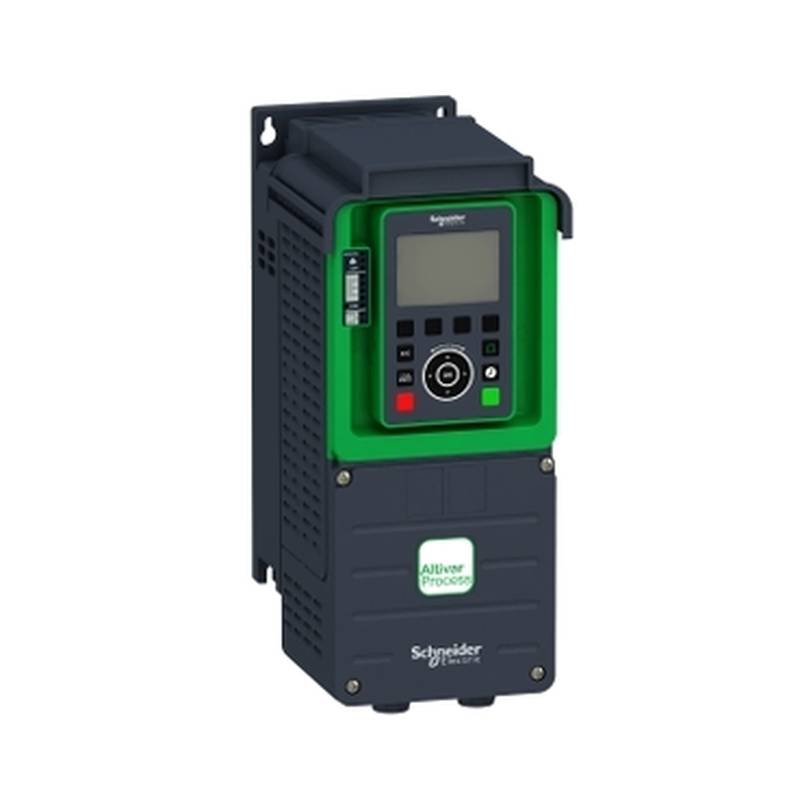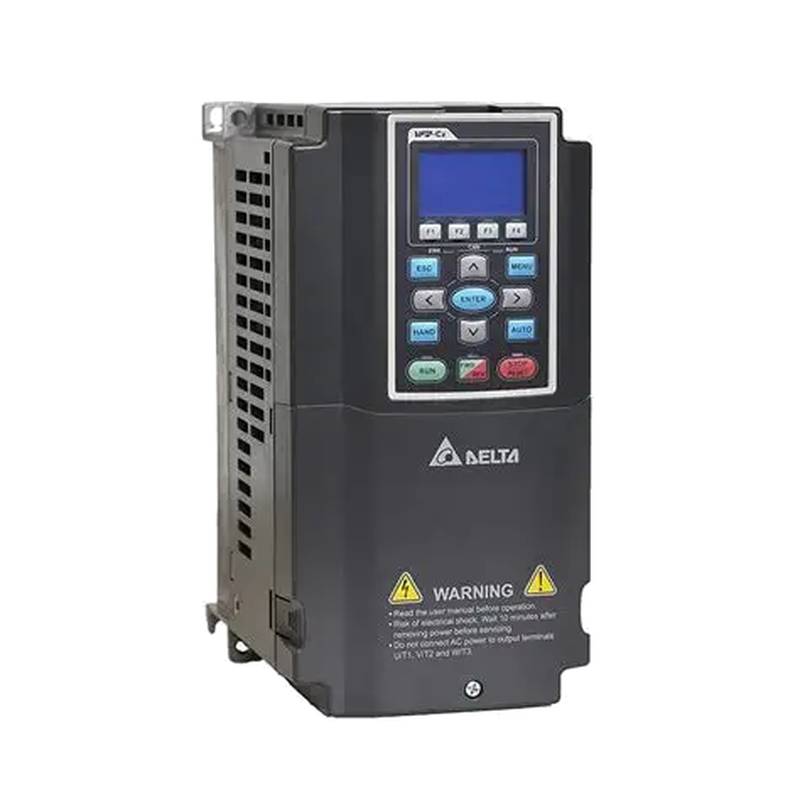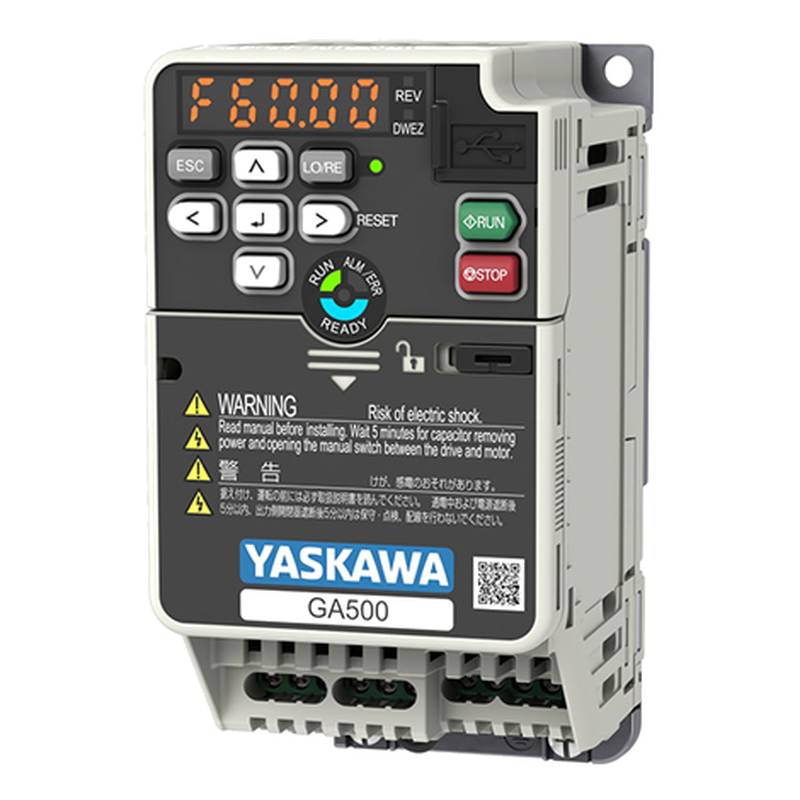
The ABB ACS880-01-12A6-3 is a high-performance Variable Frequency Drive (VFD) engineered for precise and efficient motor control across a broad spectrum of industrial applications. Built upon ABB's robust and all-compatible drive architecture, this unit offers exceptional flexibility and ease of use, making it a powerful solution for modern automation needs. Its compact, wall-mountable design simplifies installation and conserves valuable space within control cabinets and on factory floors. The drive excels in delivering superior motor performance through its standard Direct Torque Control (DTC) technology, ensuring accurate speed and torque regulation for various motor types, including permanent magnet and synchronous reluctance motors.
Product Specifications
| Parameter | Specification |
| :------------------------------ | :------------------------------------------ |
| Model | ACS880-01-12A6-3 |
| Rated Power (Normal/Light Overload) | 5.5 kW (7.5 HP) |
| Rated Power (Heavy-Duty) | 4 kW (5 HP) |
| Rated Current (Normal Use) | 12.9 A |
| Rated Current (Light Overload) | 12 A |
| Rated Current (Heavy-Duty) | 10 A |
| Input Voltage | 380-415 V AC, 3-phase, 50/60 Hz |
| Output Frequency Range | 0-500 Hz |
| Overload Capacity | 150% for 60 seconds |
| Enclosure Class | IP21 (standard), IP55 (optional) |
| Frame Size | R1 |
| Mounting | Wall-mounted (standard), Cabinet (optional) |
| Cooling Method | Air-cooled |
| Protection Level | IP21 |
| Weight | Approx. 8.5 kg |
Core Features & Market Positioning
The ACS880-01-12A6-3 distinguishes itself through its inherent flexibility and advanced control capabilities. Its market positioning is centered on providing a high-value, all-in-one drive solution that minimizes engineering, installation, and commissioning time. The integrated Direct Torque Control (DTC) is a significant differentiator, offering precise motor control without the need for motor encoders in many applications, thereby enhancing accuracy and response time. Furthermore, the ACS880-01 series is built on ABB's common drive platform, ensuring unprecedented compatibility and interchangeability with other ABB drive products and control systems. This approach streamlines system integration and long-term maintenance, positioning it as a reliable and future-proof investment for industrial operations. The drive also includes essential features as standard, such as a choke for harmonic filtering, reducing the need for additional components and saving space.
Key Application Scenarios
This ABB ACS880-01-12A6-3 VFD is exceptionally versatile, finding application in numerous industrial sectors. Its robust design and precise control make it ideal for demanding tasks such as controlling industrial pumps, fans, conveyors, mixers, compressors, and material handling equipment. It is also well-suited for the food and beverage industry, packaging machinery, and water/wastewater treatment plants. The drive's ability to handle various motor types, including permanent magnet motors, further expands its applicability in specialized machinery and automation systems where precise speed, torque, or position control is critical. The availability of marine type-approved designs also opens doors for applications in the maritime sector.
Practical System Integration Guidance
Integrating the ACS880-01-12A6-3 into existing systems is streamlined due to its user-friendly design and comprehensive connectivity options. Installation typically involves wall-mounting as standard, with cabinet mounting available as an option. ABB provides intuitive control panels and PC tools, such as Drive Composer Pro, which facilitate easy setup, parameterization, and monitoring via USB or Ethernet. For optimal performance and compliance, correct wiring practices are crucial. Shielded motor cables are recommended to mitigate electromagnetic interference (EMI), and grounding should be meticulously implemented according to the hardware manual's guidelines to ensure safety and signal integrity. The drive supports a wide array of fieldbus protocols and offers flexible I/O and encoder options, enabling seamless integration with PLCs and other automation devices.
Operation and Risk Mitigation
Operation of the ABB ACS880-01-12A6-3 is designed to be intuitive, supported by an assistant control panel and PC software that guides users through initial setup and parameter configuration. The drive incorporates built-in safety features, including Safe Torque Off (STO) as standard, which enhances operational safety by providing a reliable method to prevent unexpected machine starts. Troubleshooting common issues can often be addressed by consulting the drive's diagnostic tools and error code listings detailed in the user or hardware manuals. For instance, "Check Connection" faults typically indicate communication problems that may stem from loose cables, faulty connectors, or incorrect communication settings, requiring thorough inspection and verification of these elements. Adhering to installation and operating guidelines is paramount for both performance and safety, minimizing the risk of equipment damage or personnel injury.
Scalability & Long-Term Value
The ACS880-01-12A6-3 offers significant long-term value through its scalability and compatibility within the broader ABB ecosystem. Its modular design allows for easy expansion with various option modules, including communication adapters for different fieldbus protocols (e.g., PROFIBUS DP, PROFINET, EtherNet/IP), I/O extension modules, and encoder feedback units, enabling it to adapt to evolving system requirements. This flexibility ensures that the drive can be readily integrated into existing automation platforms and supports future upgrades to Industrial Internet of Things (IIoT) and digital manufacturing solutions. The common drive architecture across the ACS880 series means that spare parts, programming tools, and engineering expertise remain consistent, reducing long-term ownership costs and simplifying maintenance and upgrades. ABB's commitment to continuous development ensures that the ACS880 platform remains at the forefront of drive technology, offering enhanced features and efficiency for years to come.
Frequently Asked Questions (FAQs)
1. What is the primary function of the ABB ACS880-01-12A6-3 VFD?
The primary function of this VFD is to control the speed of AC electric motors. It achieves this by converting a fixed frequency and voltage AC power supply into a variable frequency and voltage output.
This allows for precise adjustment of motor speed to match process demands, leading to significant energy savings and improved operational efficiency in various industrial applications. It also provides advanced motor control features.
The drive enables smooth acceleration and deceleration, reduces mechanical stress on equipment, and offers protection against electrical faults, thereby enhancing system reliability and lifespan.
2. What are the key benefits of using Direct Torque Control (DTC) on the ACS880-01-12A6-3?
Direct Torque Control (DTC) provides highly accurate and rapid torque and speed control without requiring a motor encoder in many scenarios. This simplifies installation and reduces overall system costs.
DTC offers superior dynamic performance, allowing the drive to respond quickly to changes in load conditions. This is crucial for applications requiring precise process control and high productivity.
By optimizing motor performance and efficiency, DTC contributes to reduced energy consumption and extended motor life. It ensures the motor operates within its optimal parameters under varying loads.
3. How does the ACS880-01-12A6-3 integrate with industrial automation systems?
The ACS880-01-12A6-3 offers extensive connectivity options, including support for major fieldbus protocols like PROFIBUS, PROFINET, and EtherNet/IP. This facilitates seamless communication with PLCs and other control systems.
It features flexible I/O options for digital and analog signals, allowing it to interface with sensors, actuators, and control signals from a distributed control system. This ensures comprehensive system integration.
Optional modules can be added to expand communication capabilities and I/O capacity, making the drive adaptable to a wide range of automation architectures and future upgrades.
4. What are the typical applications for the ABB ACS880-01-12A6-3?
This VFD is commonly used in applications such as industrial pumps and fans, where speed adjustment directly impacts energy consumption and system performance.
It is also applied in material handling systems like conveyors, as well as in food and beverage processing equipment and packaging machinery due to its precise control capabilities.
Its robust design also lends itself to more demanding environments and processes, including mixers, compressors, and general industrial machinery requiring variable speed motor control.
5. What safety features are included in the ACS880-01-12A6-3?
The drive comes standard with Safe Torque Off (STO) functionality, a critical safety feature that reliably prevents unexpected motor starts or motion. This complies with high safety integrity levels.
STO ensures that the motor cannot be accidentally energized, protecting personnel during maintenance or in emergency situations. It can be easily integrated into the machine's safety logic.
Additional safety functions can be implemented through optional modules, further enhancing the drive's safety capabilities to meet specific machine safety requirements and regulations.
6. How is the ACS880-01-12A6-3 installed and commissioned?
Installation typically involves wall-mounting in a clean, ventilated environment, though cabinet mounting is also an option. Proper wiring of power and control cables is essential.
Commissioning is simplified by the intuitive control panel and ABB's Drive Composer PC software, which guides users through parameter setup, motor identification, and basic configuration.
The drive offers a startup assistant that automates many initial configuration steps, reducing commissioning time and ensuring correct initial setup for optimal performance.
7. What is the significance of the IP21 enclosure rating?
An IP21 rating signifies that the drive is protected against solid objects larger than 12.5 mm (like a screwdriver) and against vertically falling water drops.
This protection level makes the drive suitable for installation in many indoor industrial environments where it is not exposed to direct water spray or excessive dust.
While providing basic protection, IP21 rated drives may require placement in enclosures or control cabinets in environments with higher levels of dust, moisture, or impact hazards.
8. Can the ACS880-01-12A6-3 control different types of AC motors?
Yes, the ACS880-01-12A6-3, particularly with its DTC, can control a wide range of AC motor types, including induction motors and permanent magnet motors.
It also supports synchronous reluctance motors (SynRM), offering high efficiency and excellent performance characteristics, making it a versatile motor control solution.
The drive's adaptability allows users to leverage different motor technologies based on application requirements for efficiency, performance, or cost.
9. What is the expected lifespan and maintenance for this drive?
The ACS880 series is designed for robust performance and reliability, with extended maintenance intervals of up to nine years reported for certain components.
Regular visual inspections and monitoring of drive parameters can help predict potential issues. Key components like cooling fans and electrolytic capacitors have finite lifespans and may require eventual replacement.
Following recommended operating procedures, ensuring adequate ventilation, and adhering to maintenance schedules provided in the user manual will maximize the drive's service life.
10. How does the ACS880-01-12A6-3 contribute to energy efficiency?
The ability to precisely control motor speed means the drive only consumes the energy required for the current load, leading to significant savings compared to running motors at full speed constantly.
ABB's energy optimizer function provides real-time information on energy consumption and savings, helping users identify optimization opportunities.
By employing advanced control algorithms and efficient power electronics, the drive itself operates at a high efficiency level, further minimizing energy losses during operation.
























